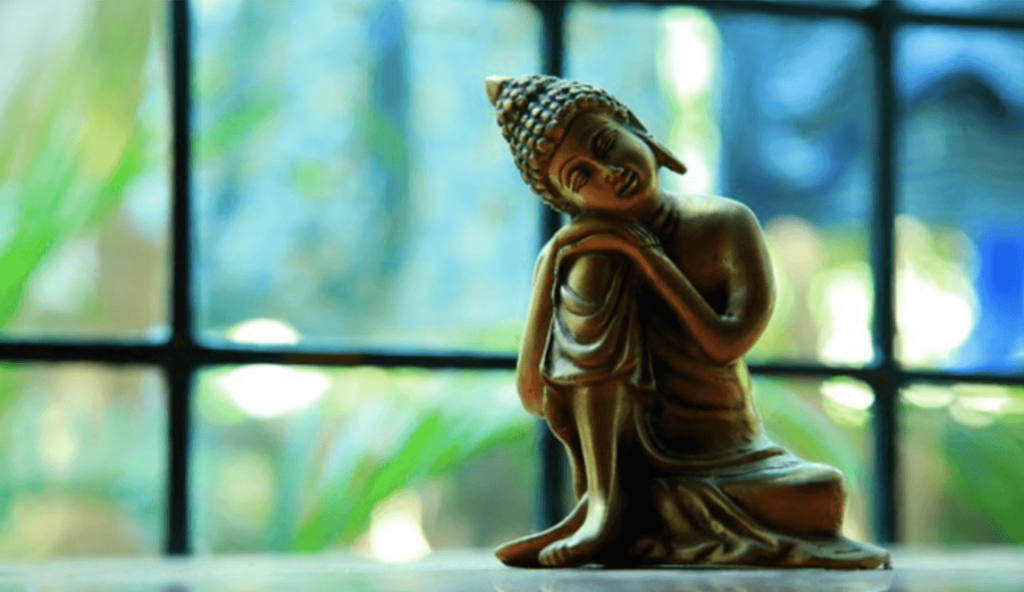Beginner’s Meditation Pt. 2
Challenges in Meditation
Part one introduced the absolutely easiest way to begin formal meditation. I say formal, because sitting comfortably next to a murmuring brook on a pleasant day and letting the mind dance upon the ripples of the water is perhaps one of the easiest informal ways to take you to a similar state.
To recap briefly, part one of this tutorial series introduced:
Location
Disturbances
Tools: music, incense, clothes, candles, cushions
Posture
Breathing
I also introduced the concept of using a candle’s flickering flame as an initial point of focus. I also wrote briefly on one of the most incessant challenges to face the meditator, that of the mind that just won’t stop chatting.
If you recall, towards the end of part one, I ask what it is you are wanting to accomplish through your meditation and suggest that there are several directions in which you might take your awareness including:
Body Exploration
Mindfulness Development
Simple Relaxation
Total Emptiness
The second part in the series addresses several common issues that practitioners of meditation often face. Let’s begin first with the same question we left off with at part one. What are you wanting to achieve through meditation? As a beginner to this art/science, I’m going to operate under the assumption that you are not entirely familiar with the origins of the practice or the purpose to which it was originally directed. So let me very briefly introduce Buddha and tell you just a little about what the ascetic monks of his time, or ‘yogis’ were looking for when they practiced their asceticism in the forests or temples.
In the Sanskrit dictionary, yoga is defined as samadhi. This word means, a state in which the fluctuations of the mind have been tethered and brought under control. The mind no longer makes any modifications to the other layers of being, namely the mental, emotional, physical, to put it simply. By bringing the mind to rest in this way, it was assured that there would be no more impressions on one’s human vehicle and one would become free from karma, liberated, released from a cycle of suffering that we appear doomed to repeat over and over again. This ‘suffering’ was known to be caused by a misguided apprehension of things which causes within us, anger, sadness, greed, fear, envy, a policy of judgmental attitudes that lead to these emotions and more, and the development of daily habits that both discouraged real health and vitality and encouraged the rapid degeneration of our physical vehicles. Yoga therefore, was an exercise developed to tame the mind in order achieve a state of both non-judgmental awareness, as well as a non-attachment to the ideas of the mind and the various states of happiness and unhappiness which it prompted in its many modes.
The previous paragraph is as deeply as I’m going to treat this subject within the parameters of this particular tutorial. It is brief and leaves out much, but it is the heart of the matter, and I mention it by way of getting back to the initial question of what it is you as the meditator are hoping to achieve through your practice. I also address it as segue into the next topic which is difficulties on the path of meditation.
One of the most challenging aspects of meditation is correct concentration. This is why the yogis of old developed so many methods of focusing their awareness. The mind is a wild animal, much more wild than a common monkey. The mind can shoot off like a laser and be half way across the planet within a second! So how to bring such a beast under control. And who is it that is doing the controlling? Who is that you behind the mind, able to give directives to that mind? Who is seeing that mind? This is one of the first questions that yogis will focus on, trying to determine the truth of the answer, trying to touch that Self eternally humming at the center of our being. That answer doesn’t come at the flick of a switch. The proverbial ‘enlightenment’, while being ready to bubble up and over and through our experience at any moment, depending on the individual’s circumstance, conditioning, experience, personality, proclivities and practice, can take a bit of time to surface.
So in answer to the challenge of concentration, we have three topics we are considering at the moment.
- What is the meditator’s own goal?
- Who is witnessing the mind’s fluctuations?
- What are the methods of focus currently being used?
Correct focus is very much dependent on the clear apprehension of the goal. Moreover, therse challenges are not unique to meditation, but entrepreneurs, enthusiasts of any genre, professionals, teachers, and parents all face the same. Some of these challenges include:
- Laziness
- Making the time to do the task
- Consistency
- Doubt (wondering whether we’re doing it right)
- Staying Motivated
There are more, but may I offer that, first of all, clarity of purpose will go a long way in addressing the five challenges mentioned above. For instance, I have bad knees. As I get older, I’m losing cartilage and very real pain is ensuing. This pain is a great motivator. I don’t want it. I like walking. I want to play with my kids. I don’t like pain. And I know what to do to strengthen the muscles around my knee joints. I know the easy exercises – they take me ten minutes in the morning and evening. It’s easy to stay motivated because I see the results quickly. It’s easy to remain consistent because the strength of my purpose outweighs that of my sloth.
So that brings us to several more challenges.
- I don’t see the benefit of meditation
- I don’t know what it is useful for
- It’s boring.
- How to maintain interest.
- Confidence.
If one is searching for awakening, or enlightenment, ask yourself this. What’s it worth to you? How badly do you want it? Because if you really can’t be bothered, if the road to glory is too long or too slow or to arduous for you, then maybe you need to reconsider your goal. On the other hand, if you’re all in, but you’re not sure of your method or approach, consider that there are models out there for you. Just like Peter Drucker is a model for many business people, and pro tennis players and novices alike get themselves a good athletic coach, you might consider enlisting some help. You’re reading this – that’s a good first step. But personal, one on one tutelage is a huge boon. Nowadays there’s video conferencing to support whatever live networks are in your area. Books and You Tube are fine, but you have to be able to discern and distinguish the wheat from the chaff. It’s nice to have a model to compare yourself against until you find your own way.
But what if you’re not looking for that state of mind most conducive to samadhi? What if you just want to relax? What if you’re only looking for a little anger management or relaxation at the end of a stressful day, or a few mindfulness techniques that are going to help you improve your memory or let you organize your thoughts after the kids have been tearing at you all day. Or maybe you’re looking at improving your work performance on the job. We get back to the question of the goal, because the goal is going to determine the approach. The goal is going to determine how to measure the benefit. The goal is going to determine your interest level. And still, everybody’s result is not the same in the same amount of time. What one man gets from five minutes of candle-gazing is not going to be the same for everyone.
Traditional yogic meditation employs several methods of directing focus and attention:
- Visual: upon an object
- Vocal: through chanting
- Respirator: breath patterns
- Auditory: with music or rhythm
There is also the method of using guided or unguided meditation to visualize specific scenes, such as the play of energy within or outside the body (i.e. chakra stimulation). There are physical focus exercises such as standing in a particular position or keeping the tongue pressed to the roof of the mouth. Or any combination of these. There are many focus exercises. Each with a purpose. And there are numerous ways to train the concentration. Remember that card game when you were a kid? Put all the cards face down and find the pairs – that was a concentration game.
And what about becoming so relaxed that we just fall asleep, simply being unable to maintain our focus for very long. Well, again, first we have to look at what the goal is, because if it’s stress relief, then, well done! But if it’s something else, then a slight modification of your method might be all that is required to keep you on track.
So, that’s where I’m going to stop part two of this series. Part one introduced the basics of how to get into the flow of meditation. Part two talks about some of the challenges and briefly introduces several goals and methods of approaching the practice. Personal clarity of one’s goal is always encouraged in order to address one’s challenges most efficiently. I’ve tried to be brief while emphasizing some of the more important points, but here at the end of part two, let me say it again, because this one message really is at the crux and is an integral pillar of your practice. Are you clear on your goal?
I invite you to reach out with questions or feedback in the comments section below. Hope this served.

…is a Saiva Tantrika, Gyana Yogi and founder of Uma Maheshwara Yoga & Ayurveda. David has an MA in Semiotics, lives in Japan with his family and works as a coach in L & D, devoting his time to developing science-based tools and programs that help people reach the fullest potential of the human condition.
Discover more from REAL YOGA
Subscribe to get the latest posts sent to your email.


